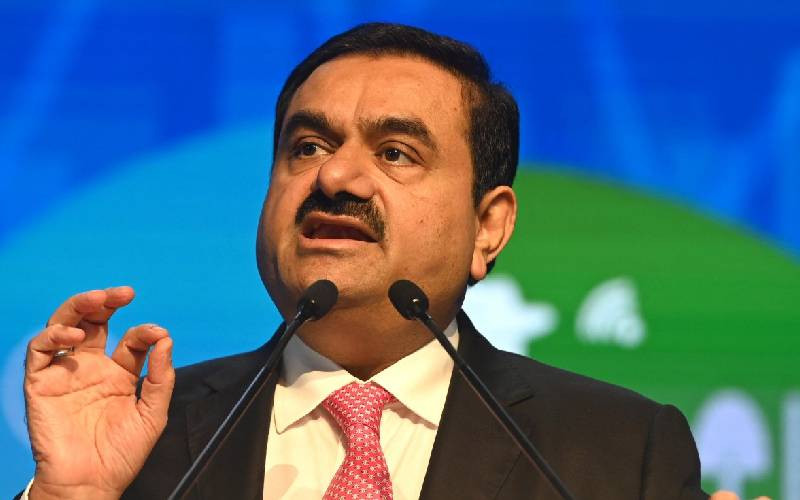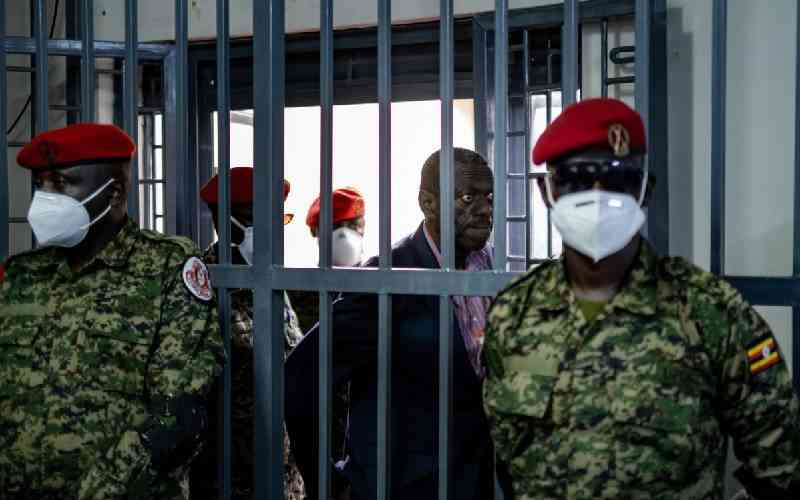By Stephen Makabila
When the Independent Electoral and Boundaries Commission (IEBC) launched its preliminary report on boundaries delimitation on January 9, chairman Issack Hassan said the process was political in nature, attached to highly competitive and emotive political issues.
And after 21 days of public hearings that ended on January 30, IEBC on Thursday presented its revised preliminary report to Parliament, but without major alterations as had been demanded in some political hotspots across the country during the public hearings phase.
In its conclusion in the revised report, the IEBC stated, “Through many presentations and memorandum, Kenyans expressed the need to have more constituencies and wards but this would not be granted due to the limited number of constituencies and county assembly wards.”
But Nominated MP Mohammed Affey wondered why the commission went round collecting views, only to reproduce the Ligale commission report.
“We cannot have a commission scared of a Statute. It should have been independent and we had expected it to make drastic changes on the Ligale report,” Affey said.
Originally, it was Central Kenya leaders who raised issues right from the original Interim Independent Boundary Review Commission (IIBRC ) report, which acted as the primary source for the IEBC.
Choruses of dissatisfaction
However, choruses of dissatisfaction emerged from almost all the parts of the country, right from Coast Province, lower Eastern, parts of Rift Valley, North Eastern, Western and Nyanza provinces.
In Central Province, MPs led by the Chairman of the Central Kenya Parliamentary Group, Mathira MP Ephraim Maina, have been toiling with the idea of either blocking the report in Parliament or in court, over inadequate constituencies allocated to the province.
Central had originally 29 constituencies, but has been added five constituencies to bring the new total to 34 constituencies. However, the region’s leadership has been demanding at least three more constituencies.
The new constituencies are Kikuyu (carved from Kabete), Ruiru and Thika Town (from Juja) and Kiambu (from Kiambaa) while in Nyandarua County Ol-Jororok has been created by splitting Ndaragwa and Ol-Kalou.
Apart from Mr Maina, other MPs opposed to the report include Nderitu Mureithi (Laikipia West), Elias Mbau (Maragua), Jeremiah Kioni (Ndaragwa), Muturi Mwangi Kiharu, Nemesyus Warugongo (Kieni) and Erastus Mureithi (Ol Kalou).
Such demands aside, disagreements over boundaries within the region were also evident during the hearing period. For example, Police in Kirinyaga had to disperse opposing groups engaged in shouting match over boundaries during the hearing process.
IEBC Commissioner Muthoni Wangai explains Central Province had to get few constituencies because it has a higher number of protected constituencies, with six out of the 27 across the country.
Stay informed. Subscribe to our newsletter
The protected constituencies in Central are Ndaragwa, Tetu, Othaya, Mukurweini, Kangema, and Mathioya.
In Eastern Province, Assistant Minister for Higher Education and MP for Tigania West Kilemi Mwiria said the criteria used to delimit the new boundaries was unfair and disadvantageous to Meru County and Eastern Province.
Residents of Igembe North accused the defunct Interim Independent Electoral Boundaries Review Commission of altering the region’s census reports so as to deny them an opportunity of a new constituency.
Final report
Residents had proposed that the IEBC divide Igembe North and Igembe South constituencies to create a second constituency. Igembe South MP Mithika Linturi said he would lobby other MPs to reject the IEBC final report of the boundaries commission once it is presented in Parliament.
In Western Province, there has been a stand-off between Webuye MP Alfred Sambu and Nominated MP Musikari Kombo over the boundary of Webuye and Bokoli constituencies.
In North Eastern Province, there are issues around Wajir South constituency, the largest in the province and the second largest in the country, which was not split.
The giant Rift Valley Province has also a share of its own demands. Protests over shifting of boundaries and lack of consideration for geographical features had characterised the IEBC public hearings in the North Rift.
In Nyanza, Alego/Usonga residents had opposed boundaries of the proposed Ugunja constituency saying it interfered with one of their location, which they could not let go.
And in South Nyanza, Bomachoge leaders led by area MP Simon Ogari maintained they were uncomfortable with a proposal to merge sections of Bobasi and Bomachoge to create the proposed Gucha constituency.
In Kilifi, leaders from two bordering constituencies differed over the actual boundary between the two electoral units.
In Taita Taveta, Wundanyi MP Thomas Mwadeghu had maintained Mtito Andei and Mackinon Town wards in Makueni and Kwale counties are in Taita Taveta and residents would not allow them to be taken away.
In Nairobi, most leaders welcomed the additional nine constituencies but faulted the new electoral boundaries in the city. Most contentious was Pumwani ward, which has since independence been home to Kamukunji constituency, but has now been moved to Starehe constituency.
 The Standard Group Plc is a
multi-media organization with investments in media platforms spanning newspaper
print operations, television, radio broadcasting, digital and online services. The
Standard Group is recognized as a leading multi-media house in Kenya with a key
influence in matters of national and international interest.
The Standard Group Plc is a
multi-media organization with investments in media platforms spanning newspaper
print operations, television, radio broadcasting, digital and online services. The
Standard Group is recognized as a leading multi-media house in Kenya with a key
influence in matters of national and international interest.
 The Standard Group Plc is a
multi-media organization with investments in media platforms spanning newspaper
print operations, television, radio broadcasting, digital and online services. The
Standard Group is recognized as a leading multi-media house in Kenya with a key
influence in matters of national and international interest.
The Standard Group Plc is a
multi-media organization with investments in media platforms spanning newspaper
print operations, television, radio broadcasting, digital and online services. The
Standard Group is recognized as a leading multi-media house in Kenya with a key
influence in matters of national and international interest.





